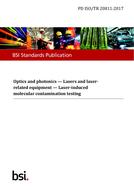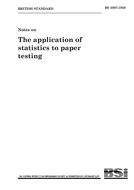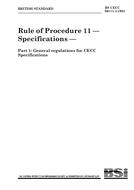
BS PD ISO/TR 20811:2017
Click here to purchase
BS PD ISO/TR 20811:2017 describes the setup, test procedure and analysis of measured data for investigation oflaser-induced molecular contamination (LIMC) for space and vacuum applications.
LIMC is the formation of depositions on optical surfaces due to interaction of intense light radiation withoutgassing molecules especially from organic materials. It is a phenomenon of molecular contaminationand it is distinguished from particle contamination, which can occur during manufacturing, assembly,integration or test of the optical components.
Formation of laser-induced depositions can lead to deterioration of the performance of an opticalsystem. Phase distortion, scattering and absorption can be increased by LIMC. LIMC is of particularrelevance, if a laser system is operated in vacuum at short wavelength and short pulse duration. In sucha case, even small partial pressure of contamination material in the range of 10?5 hPa could have strongnegative impact on optical performance. It was also shown that the laser-induced damage thresholdcould be reduced by a factor of 10 and more if laser-induced depositions are involved.
Laser-induced molecular contamination and laser-induced damage are both phenomena, for which theinteraction of laser radiation with optical surfaces plays a major role, in case of LIMC with additionalmolecular contamination. Therefore, this document is treated in relation to ISO 21254 (all parts) whichspecifies the test methods for the determination of laser-induced damage thresholds.
This method was derived to evaluate qualitatively, whether the material under investigation causesdeposits on optical surfaces in a low-pressure environment in the presence of high-energy nanosecondpulsed laser irradiation at a wavelength of 355 nm. Due to the nature of photochemical surface reactions,this result cannot be directly transferred to scenarios where the properties of the irradiation are altered(especially wavelength, repetition rate, pulse duration, etc.). Due to the non-linear growth of the laserinducedcontamination and its detection methods, this technique does not provide quantitative meansto evaluate the deposit and, therefore, it should be seen as a means to compare materials relatively withrespect to their laser-induced contamination behaviour.
Furthermore, it is out of the scope of this method to select representative quantities of contaminationmaterials – representative with respect to the material partial pressure present in the vicinity of theoptical surface in a real laser system. This is carefully derived with other methods and is a mandatoryparameter to be fixed before applying this method.
Cross References:
ISO 21254 (all parts)
ISO 11145:2016
ISO 14644-8:2013 ED2
ASTM E1559 – 09
ISO 11146-1:2005 Ed 1
ISO 15388:2012
ASTM E595 – 07
ECSS-Q-ST-70-02C
All current amendments available at time of purchase are included with the purchase of this document.
Product Details
- Published:
- 09/18/2017
- ISBN(s):
- 9780580910586
- Number of Pages:
- 18
- File Size:
- 1 file , 1.9 MB
- Same As:
- ISO/TR 20811:2017
- Product Code(s):
- 30327517, 30327517, 30327517
- Note:
- This product is unavailable in United Kingdom

